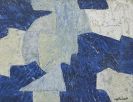
Robert Venturi
1925 Philadelphia
The American architect, designer, and theorist Robert Venturi was born in Philadelphia in 1925. Between 1943-50 Robert Venturi studied architecture at Princeton University. A scholarship enabled Venturi to stay at the American Academy in Rome from 1954 until 1956. Robert Venturi worked for a while in the practice of Eero Saarinen and Louis Kahn.
From 1957 until 1965 Robert Venturi taught architecture at the University of Pennsylvania. A series of lectures Robert Venturi gave at the Museum of Modern Art in New York grew into the influential book "Complexity and Contradiction in Modern Architecture" (1966).
In 1972 Robert Venturi co-authored, with Denise Scott Brown and Steven Izenour, another book that was equally influential: "Learning from Las Vegas". Robert Venturi epitomizes Postmodern architecture. He advocates a symbolic and sophisticated formal language with which modern man might more easily identify.
In 1958 Robert Venturi founded an architecture practice with John Rauch in Philadelphia. When John Rauch left the partnership, Robert Venturi founded with Denise Scott Brown the present-day Venturi Scott Brown & Associates in 1989.
Robert Venturi's most important achievements in architecture include the Sainsbury Wing of the National Gallery in London (1991), the Museum of Contemporary Art in San Diego (1996), and the Philadelphia Orchestra Hall (1987-96). In 2000 the new Campus Center Robert Venturi designed for Princeton University was finished.
As a designer, Robert Venturi has created furniture for Knoll, including the Venturi Collection (1978-84), a range of nine laminated wood chairs with backs that quote from various period styles. In 1983 Robert Venturi designed a four-part tea and coffee service for the Alessi project "Tea & Coffee Piazza". In 1990 Robert Venturi also designed a tea and coffee service for Swid Powell.

Would you like to sell a work by Robert Venturi?
Infos for seller






